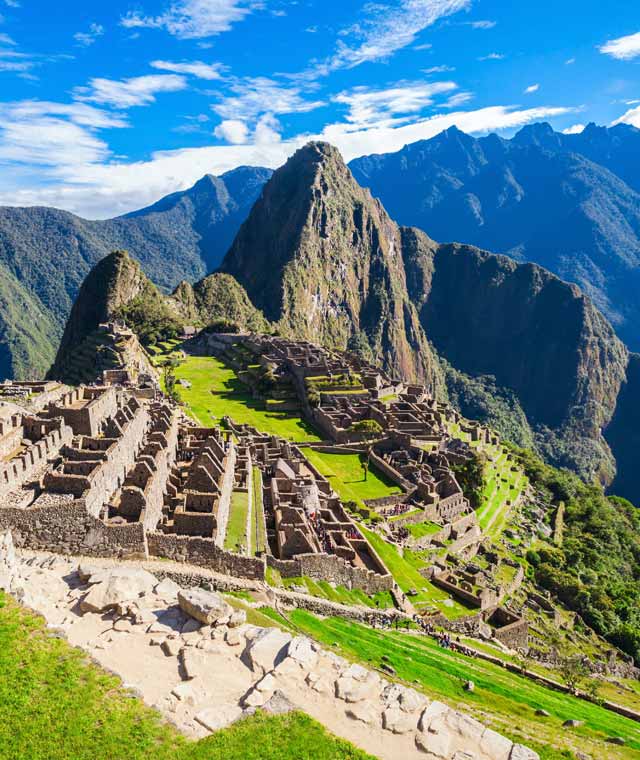

Choquequirao is an Inca archaeological site in southern Peru, often considered Machu Picchu’s “sacred sister” due to its similar architectural style and importance.
It is located in the Apurímac River valley, specifically in the district of Santa Teresa, La Convención province, Cusco region, Peru.
Access to Choquequirao is primarily by a multi-day trek. There are no roads leading directly to the site.
Most treks range from 4 to 5 days, depending on the route and the starting point.
It is considered a challenging trek due to significant elevation changes and the steepness of some sections.
While it’s possible to do it independently, it’s highly recommended to go with a licensed guide for safety, navigation, and historical insight.
Good physical condition is essential. Regular hiking, cardio, and strength training in the months leading up to the trek are advisable.
The dry season, from May to October, is generally considered the best time for trekking due to more stable weather conditions.
Essential items include sturdy hiking boots, layers of clothing, rain gear, a hat, sunscreen, insect repellent, a first-aid kit, and a headlamp.
There are no official age restrictions, but due to the trek’s difficulty, it’s not recommended for very young children or elderly individuals with health issues.
Yes, it’s possible to do it independently, but you’ll need to arrange your own transportation, food, and camping gear.
Most tour operators include porters or muleteers to carry your main luggage, allowing you to carry a lighter daypack.
Accommodation is primarily camping in designated campsites along the trail. Some basic lodges might be available at the start or end points.
Yes, there is an entrance fee to the archaeological site, which is usually included in organized tour packages.
Basic latrines are available at some campsites, but facilities are generally limited.
The trek involves significant elevation changes, so acclimatization in Cusco (around 3,400m / 11,150 ft) for a few days before starting is highly recommended.
Cell phone service is generally very limited or nonexistent along most of the trail.
The region is known for its diverse wildlife, including various bird species (like the Andean condor), and sometimes spectacled bears, though they are elusive.
Yes, some longer treks combine Choquequirao with a route that eventually leads to Machu Picchu, though these are even more challenging.
Choquequirao is much less visited and more remote than Machu Picchu, offering a more adventurous and secluded experience.
Prices vary widely depending on the duration, inclusions (guide, porters, food, equipment), and the tour operator. Expect to pay a few hundred to over a thousand dollars.
No specific permits are required like for the Inca Trail, but you do pay an entrance fee to the archaeological site itself.
Reputable tour operators will have emergency protocols in place, including satellite phones and evacuation plans.
Basic supplies might be available at small local communities along the route, but it’s best to carry enough food and water for each day.
The trek involves descending into and ascending out of deep canyons, with significant elevation drops and gains, often from around 3,000m to 1,500m and back up to 3,000m.
It’s highly recommended to purify any water you collect from natural sources using filters or purification tablets.
No, there are no hot springs directly at or very near Choquequirao.
The terraced llama figures carved into the mountainside are a unique and iconic feature of Choquequirao, believed to have agricultural and spiritual significance.
While possible, the rainy season (November to April) can make the trails very muddy and challenging, and increase the risk of landslides.
There have been ongoing discussions and plans for a cable car to Choquequirao, but as of now, access remains primarily by foot, preserving its remote and adventurous nature.

At Choquequirao Experiences we are passionate about showcasing Arequipa’s natural beauty through responsible tourism. We offer personalized tours—from scenic hikes to classic adventures—designed to match your unique preferences.